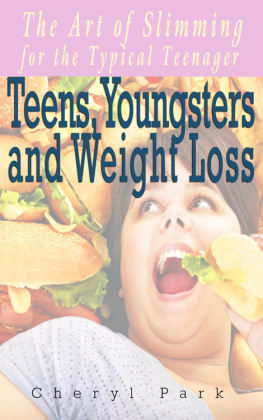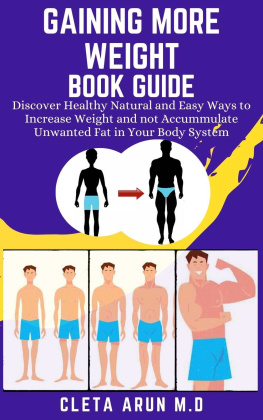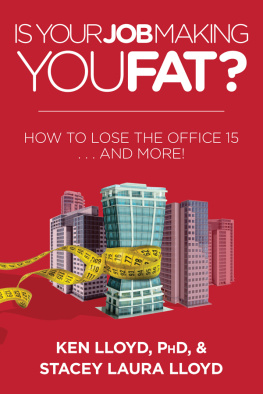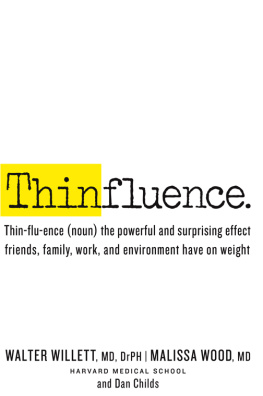

Learn more about books that will inspire and
enable you to improve your life and the world around you.
Follow us @RodaleBooks



rodalebooks.com
This book is intended as a reference volume only, not as a medical manual. The information given here is designed to help you make informed decisions about your health. It is not intended as a substitute for any treatment that may have been prescribed by your doctor. If you suspect that you have a medical problem, we urge you to seek competent medical help.
Mention of specific companies, organizations, or authorities in this book does not imply endorsement by the author or publisher, nor does mention of specific companies, organizations, or authorities imply that they endorse this book, its author, or the publisher.
Internet addresses and telephone numbers given in this book were accurate at the time it went to press.
2014 by Harvard University
All rights reserved. No part of this publication may be reproduced or transmitted in any form or by any means, electronic or mechanical, including photocopying, recording, or any other information storage and retrieval system, without the written permission of the publisher.
The table on is reprinted from Lancet, Vol. 378, Boyd A. Swinburn et al, The Global Obesity Pandemic, 80114. Copyright 2011 with permission from Elsevier.
Book design by Jessica Morphew
Library of Congress Cataloging-in-Publication Data is on file with the publisher.
ISBN-13: 978-1-62336-015-3
eISBN-13: 978-1-62336-016-0

We inspire and enable people to improve their lives and the world around them.
rodalebooks.com
To our families
Contents
Introduction
Youve dieted. Youve exercised. And yet, you still find it a challenge to achieve a healthy weight and keep the extra pounds off.
How many times have you heard this story? Probably more than you can count. And you may have noticed that those around you are facing a similar struggle with their weightyour sister, your children, your coworkers, or your neighbors.
The ironic part is that, if this were any other problem that affected you and so many others you knowindeed, so many of the people living in this countrynearly all of us would immediately look to the underlying factors that contribute. During the most recent financial crisis, for example, individuals who were affected did not just scrutinize their own budgets and bank accounts; they looked at the home mortgage bubble, the practices by lending companies, and the policies of the federal government. Put another way, if the power goes out in a hurricane, you dont place all of the blame on your own fuse box. Youre probably on the phone with the power company and looking out the window to see if your neighbors are experiencing the same issue.
The country finds itself in the midst of an obesity crisis, and so many other countries are already following suit. And yet, for most of us, when it comes to solving this problem, the approach we take is to go it alonewhether it involves a fad diet, an extreme exercise regimen, or some other narrowly focused strategy.
Clearly, the way we as individuals, as well as our society as a whole, should be engaging this problem is in a way that is completely opposite to the approach we have been taking. The personal lifestyle habits that we use to get to a healthier weightand change it for goodshould be supported within our families and homes. Our relationships outside of the home, too, should be more conducive to healthful choices and activities. Workplaces should be safe havens that foster health and healthy weight. And government entities should be responsive to the problem, enacting and enforcing policies that give all citizens, regardless of their socioeconomic background or geographical location, a better chance at being at a healthy weight.
Instead, unhealthy weight has been framed as an issue of individual responsibility, stigma, and personal shame. It is a portrayal that has seeped into the messages we get from the media and, hence, the myopic approaches that have been offered as solutions.
As Americans, most of us carry too much weight. Yet, there is little that is more isolating than trying to lose it.
What is the real solution? It is the thread that has the potential to connect all of the now disparate elements that contribute to our ability to achieve and maintain a healthy weight. This thread is influenceboth the individual influence that we wield as well as the external influences that hold sway over what and how much we eat, the degree of physical activity we get, and the messages and policies that define the norms within our society.
Influence, of course, is a thread that connects many different areas that affect weightnutrition and diet, exercise, relationships, and media messages to name just a few. So in order to appropriately tackle the issue and speak to all of these areas, I assembled a diverse team of authors to collaborate on this book.
My background is deeply rooted in food and agriculture. For five generations, the Willett family operated a dairy farm in Michigan, and I grew up actively involved in a 4-H vegetable club, taking home many blue ribbons at the local county fair and a state championship. I studied food science at Michigan State University before deciding to attend medical school to better understand the links between foods and health and to use this knowledge to help reduce the burden of illness. After obtaining my MD from the University of Michigan, I came to Harvard in Boston for internship and residency in internal medicine, still pursuing nutrition where possible along the way. Although I greatly enjoyed caring for my patients, I realized that most had conditions like heart disease and diabetes that could only be managed, not cured. Wanting to understand how these might, instead, be prevented, I enrolled in the doctoral program in epidemiology at Harvard School of Public Health. During this time, I began to develop ways to integrate the investigation of diet into long-term studies of risk factors for heart disease, cancer, and other important diseases. I applied these methods starting in 1980 in the Nurses Health Study and the Health Professionals Follow-Up Study. Together, these studies, which included nearly 300,000 men and women, provide the most detailed available information on the long-term health consequences of food choices.
Being a physician at heart, I realized that the many scientific papers we had published (more than 1,500!) needed to be shared in a way that could serve the general public. Thus, with the help of Ed Giovannucci and Pat Skerrett, I wrote Eat, Drink, and Be Healthy: The Harvard Medical School Guide to Healthy Eating
















